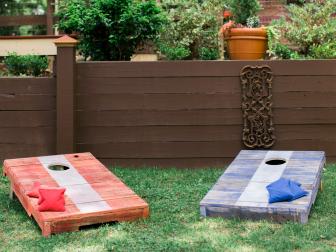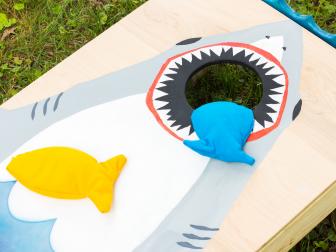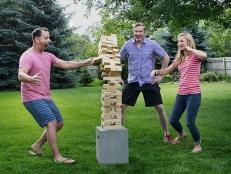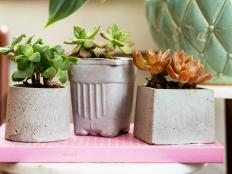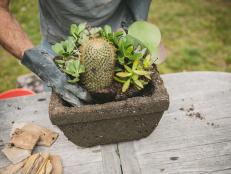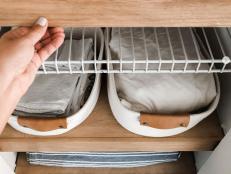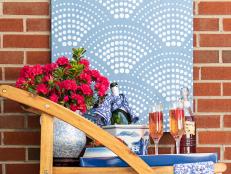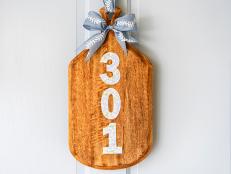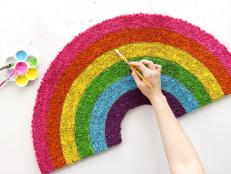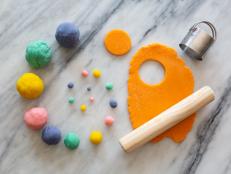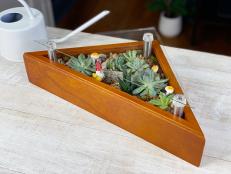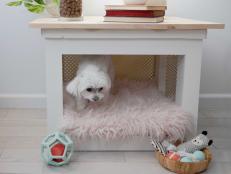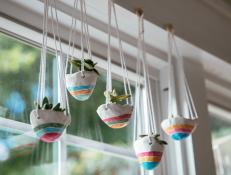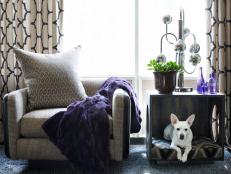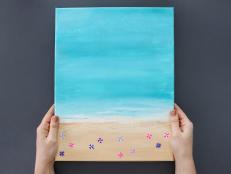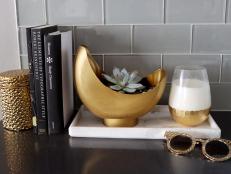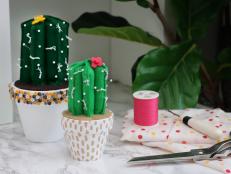How to Build Regulation Cornhole Boards
This bean-bag toss game is fun and easy for the whole family. Building a cornhole set with regulation cornhole board dimensions is a fairly easy woodworking project that you can tackle in a day.
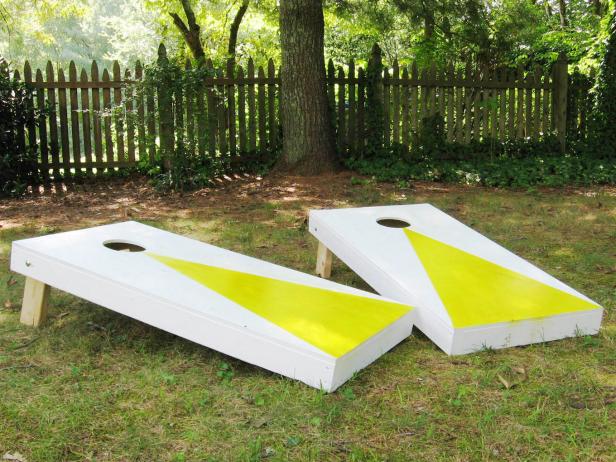
Materials Needed
- (2) 24" x 48" pieces of 1/2" plywood for the surface
- (4) 2x4 x 48" for the frame
- (4) 2x4 x 21" for the frame
- (4) 2x4 x 11-1/2" for the legs
- 1-lb. box of 1-5/8" deck screws
- 1-lb. box of 3" deck screws
- (4) 1/2" x 4" carriage bolts with (4) washers and (4) wing nuts
- wood putty
- exterior-grade paint
- primer
Tools Needed
- jigsaw
- measuring tape
- compass
- drill with drill bit and Phillips-head screw bit
- 1/2" drill bit
- clamps
- circular saw
- random orbit sander
- paint roller
Game Time
The American Cornhole Association requires platforms be a 48" x 24" rectangle made from 1/2-inch plywood. The front of the platform stands 2-1/2 to 4 inches tall and the back of the platform sits 12 inches off the ground. The plans for this cornhole board project follow those requirements.
Regulation corn bags need to be 6-inches square, made from duck canvas and be filled with two cups of corn feed. A set of eight can be purchased online for $25 to $30. You can also purchase corn bags made with a plastic filling; these are less expensive than the corn-filled bags and are weatherproof. Corn-filled bags can easily get ruined if left in the rain.
Project Cut List and Plans
You will need two 24" x 48" sections of 1/2" plywood; four 2x4 x 48" for the frame; four 2x4 x 21" for the frame; and four 2x4 x 11-1/2" for the legs.
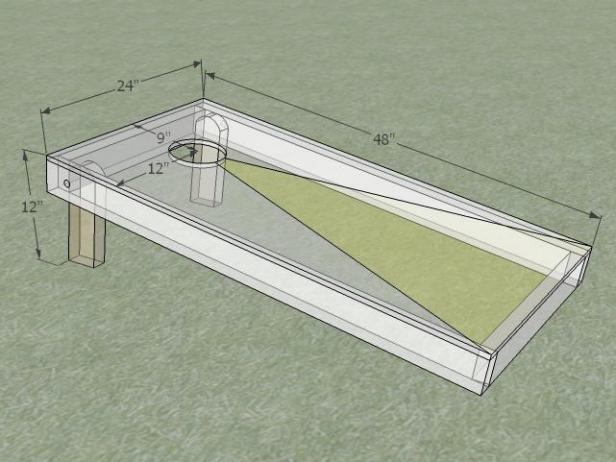
Construct the Platform Box
Cut the plywood into two 2’ x 4’ sections. Cut the 2x4s to the length specified in the cut list for the frame. Use 3" screws to fasten the 2x4s into a box with the 21-inch pieces inside the 48-inch pieces to form a 2’ x 4’ box. Lay the plywood on top of the box, use the plywood to square up the 2x4 frame. Fasten the plywood onto the frame with 1-5/8” screws. Repeat for the second platform box.

Cut Legs and Fit
Cut a 2x4 to 11-1/2” for the four legs. Make a full 3-1/2" radius cut on one end of each leg. To make the cut, measure 1-3/4" down the length of the 2x4 and draw a line across it. Place a compass point centered on that line then draw the arc. Use a jigsaw to make the cut.
Turn the box upside down; lay a leg parallel, flush up against one of the top corners with the radius-cut side in the corner. Clamp into place.
From the inside of the box, make a mark in the center of the 2x4 vertically inside the radius. Drill a 1/2" hole through the side of the box and through the support leg.
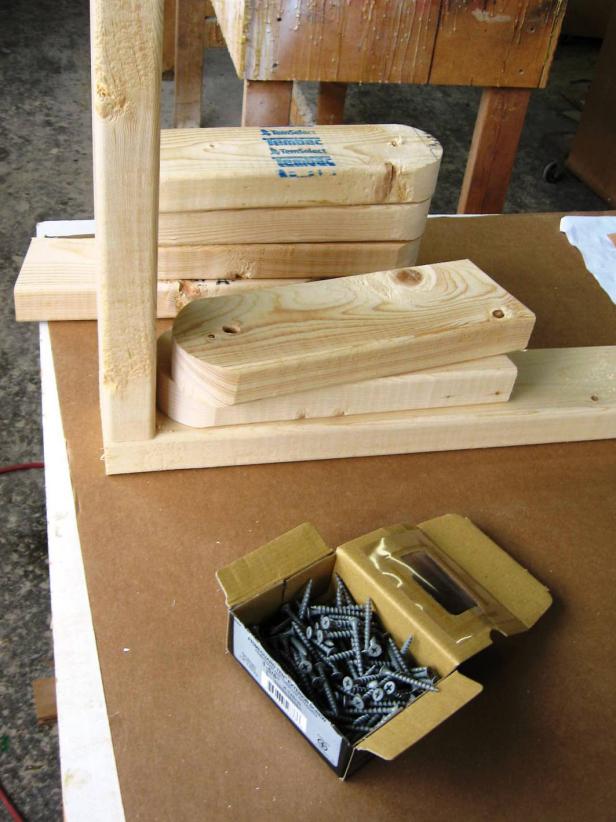
Attach Legs
Install the carriage bolt through both holes and attach with a washer and a wing nut. Check for operation; see if the legs can fold up and down inside of the platform. You may have to adjust the radius top if it is contacting anywhere, use a sander to do this. Repeat the process for the other legs.
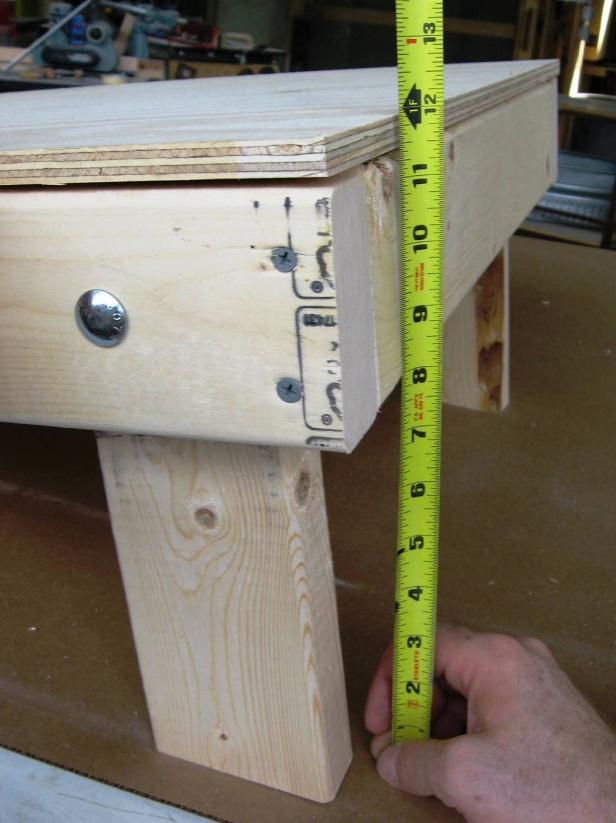
Cut the Leg Ends
To cut the angle on the bottom of the leg, turn the box right-side up and set it on a worktable with the legs tucked under. Place a block (or anything that will hold it up, we used a bucket) under the box so that the back of the platform is 12 inches off the tabletop. Slide the box to the edge of the table, pull down the leg closest to the edge so that it hangs just over the table edge. Using the tabletop as a guide, draw a straight line across the bottom of the 2x4. Repeat for the opposite side. Cut the ends off using a circular saw.
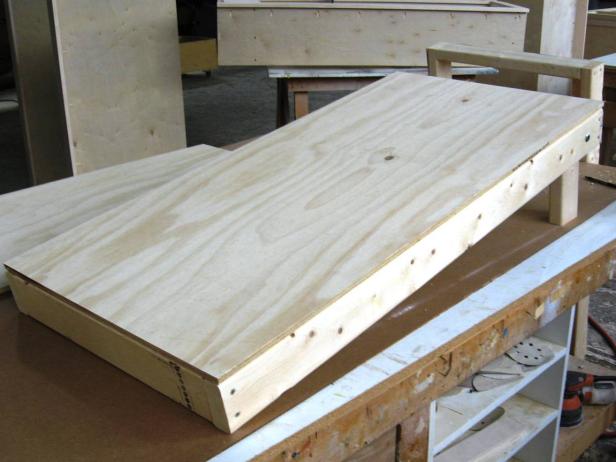

Cut Hole in Platform
To find the center point for the hole, make a mark 9 inches down from the top and 12 inches in from each side.
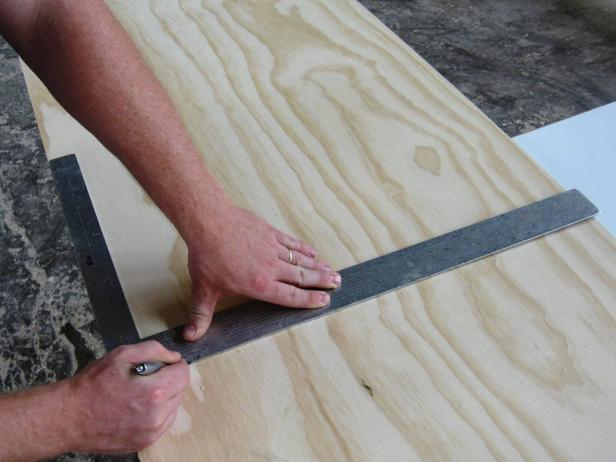
Create a Circle
Use a compass to mark a 6-inch diameter circle around the spot that you marked.
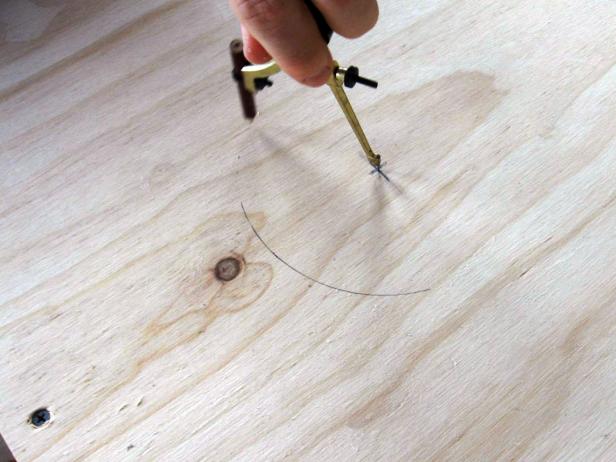

Drill Hole
Pre-drill a hole along the edge of the circle large enough to accept the jigsaw blade. Remove the drill and use a jigsaw to cut out the circle. Sand the edges of the hole smooth.
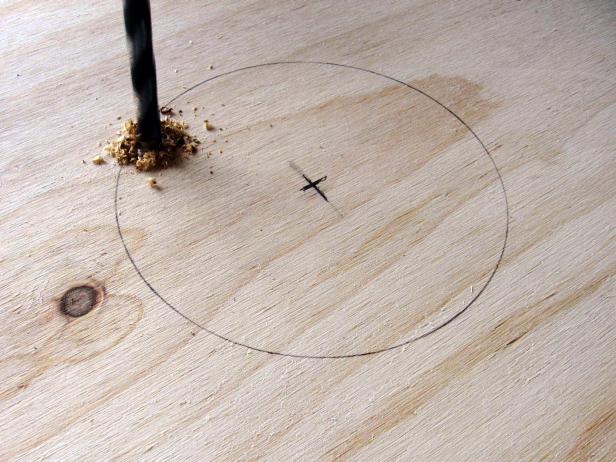
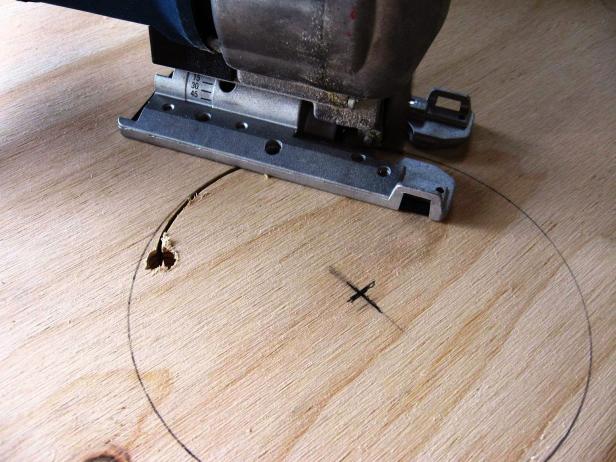

Sand Board
Sand the entire board and around all edges including inside the circle. Putty all screw holes.

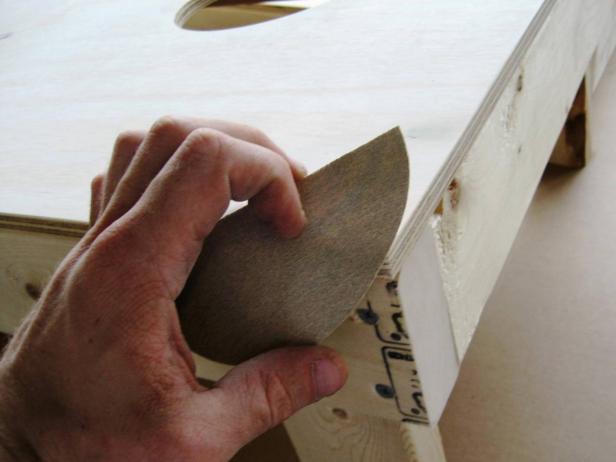
Apply Primer
Prime the entire box. When the primer dries, re-sand the entire box. Wipe clean with a light, damp cloth, and paint with exterior-grade paint (we used a high-gloss).

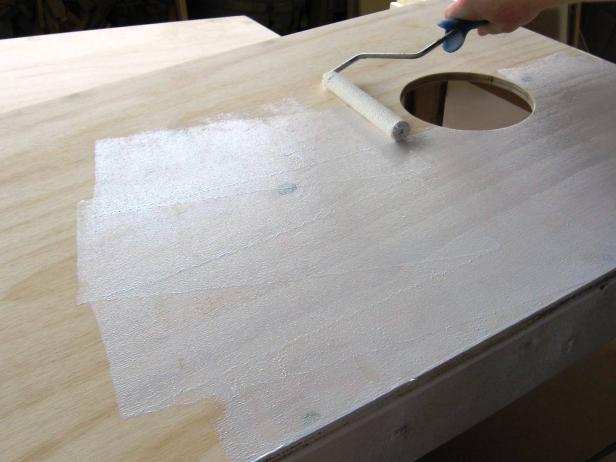

Decorate
We painted standard triangles on our boards. To do this, stretch blue painter's tape in the shape you want, and paint the desired area.

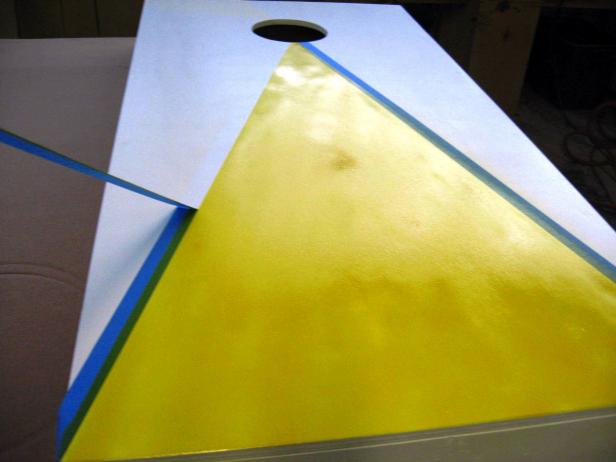


.-Battle-on-the-Beach-courtesy-of-HGTV.-.jpg.rend.hgtvcom.196.196.suffix/1714761529029.jpeg)





